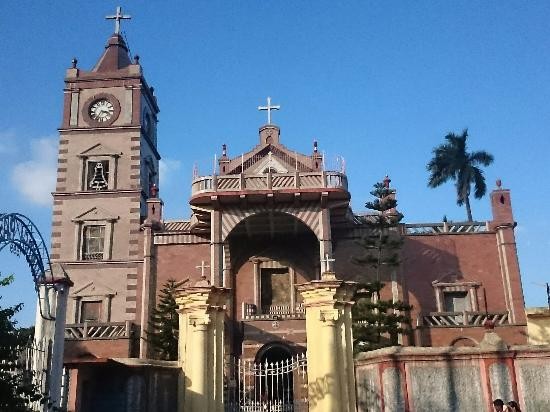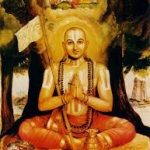Basilica of Holy Rosary was established around 1660 and is one of the oldest churches in West Bengal. A church was built by Portuguese on the banks of Hooghly almost a century after Vasco da Gama reached this state. Considered to be built by Gomez de Soto, it has a key stone of the old church that has engraved 1559 over the gate of the monastery. There are three altars, several tomb stones and a small musical organ in the church. It is also one of the most popular historical churches in West Bengal.

History
The Basilica of the Holy-Rosary, commonly known as Bandel Church, is built by the Portuguese, during their settlement in Bengal. In the year 1579, the Portuguese founded the city of Hooghly-Chuchura for military as well as trade settlement. They called a group of Augustinian monks from Goa and built this huge monastery and church in the year 1599.
In 1579, the Portuguese built a port on the banks of the Hooghly, as well as a fort, and enlisted the services of a band of Augustinian Friars, then the largest religious body in Goa. The following year, Captain Pedro Tavares obtained the emperor’s full permission to preach the Catholic faith publicly, and erect churches. Thus the Bandel Church came to be constructed in 1599.

This first church was burnt down during the sacking of Hooghly by the Moors in 1632. A newer church, constructed by Gomez de Soto (also spelt John Comes de Soto), was built over the ruin in 1660. The keystone of the older church can still be seen on the eastern gate of the monastery, bearing the date 1599. On November 25, 1988, Pope John Paul II declared the sanctuary a minor basilica.

Legend
Almost a century after Vasco da Gama reached the west coast of India, the Portuguese started making inroads into Bengal. By 1599, they had settled in and around the present-day Hooghly district and built the church that after being modified several times is now known as the Bandel Church. According to some historians, the church and monastery had been built in 1660 by Gomez de Soto with the keystone of the old church.

Legend has it that in 1660, a Portuguese ship whose sail was torn in a storm drifted into the river and ended up in Bandel. During the storm, the ship’s captain had pledged to offer the main mast of the ship to the first church he sighted. The captain kept his word and the mast can still be seen in the compound of the Bandel Church.
In the year 1632, during the Mughal invasion of Hooghly, under the rule of Emperor Saha Jahan, the church was destroyed and four of the five priests were killed. Tiago, an ardent devotee tried to carry the statue of “Our Lady of Happy Voyage”, to safety. But he was killed by an enemy arrow and sank into the river along with the statue. This statue was later found in the bank thougt. Only one priest, Fr. Joan da Cruz was survived, who along with few thousands of Christians were deported to Agra fort. There they were punished to death and were left to die at the mercy of some ferocious elephants.

Legend has it that one of the elephant instead of killing Fr. Joan da Cruz, lifted him and placed him on it’s back. It carried Fr. Joan in front of the Mughal emperor and knelt down as if pleading for mercy.
Emperor Saha Jahan considering this as a miracle set the prisoners free. He then sent them back to Bandel, gave 777 bighas of land and money to reconstruct the church. Thus the church was again reconstructed at 1633.

Architecture
A ship’s mast stands in front of the church; it was presented to the church by the captain of a vessel that had encountered a storm in the Bay of Bengal, and its rescue was attributed to Mary. The church has three altars, several tombstones, an organ, and a shrine to Mary.
An arched gateway forms the main entrance of the church. A statue of Mary, with baby Jesus, on a boat is installed atop the gate.
Take the stairs to the top balcony, where devotees light candles in front of “Our Lady of the Happy Voyage”. The balcony provides a spectacular view of the Jubilee Bridge across the Hooghly. The bridge, which was built in 1887 to mark the golden jubilee of Queen Victoria’s reign, is one of the oldest operational rail bridges in the world.

The main altar houses the statue of Our Lady of Holy Rosary. The other two altars contain statues of Jesus and St John Bosco. The complex contains statues of several saints, apart from a graveyard and the mast.
The Imambara is the other landmark of Bandel. Imambara literally means the residence of the Imam, but in the local context, the word stands for a house or an assembly hall built by the Shiites for observing the Muharram.
The imposing structure was built in the memory of philanthropist Hazi Mohammad Mohsin over 20 years. It was completed in 1861.
Designed by architect Keramtulla Khan, the two-storeyed building is surrounded by a courtyard with a fountain and a pool. Two 85ft-high towers dominate the structure. Each tower has a flight of 152 stairs and offers a panoramic view of the river, including the Jubilee Bridge.

A three-storey structure connecting the towers contains a clock on the top floor. The lower floors contain the bells and the clock machinery. These are out of bounds for visitors.
A room at the far end of the courtyard contains beautiful chandeliers and religious artefacts. The courtyard at the back contains a sundial. The Imambara is not being maintained well — the fountain has long stopped working and the water in the pool has turned green. But the clock sounds a gong every quarter of an hour, reminding everyone around of the glorious days of Bandel.
Must read “50 Stars of Church” : St Paul CAthedral, Kolkata – The First Victorian Cathedral
Must read “50 Stars of Christmas” : Medak Church – Built for the Poor! Reverred by All!!!









